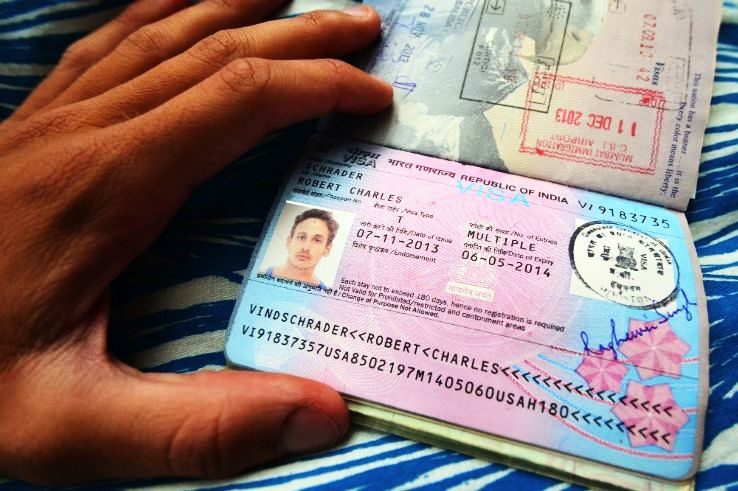Traveling to India is an enriching experience, offering a blend of vibrant cultures, rich history, and diverse landscapes. However, before embarking on your journey to this beautiful subcontinent, it’s crucial to understand the visa requirements and procedures. Navigating the Indian visa process can seem daunting at first, but with the right information and guidance, obtaining your tourist visa can be a smooth and hassle-free experience. INDIAN VISA INFORMATION FOR TOURISTS
Types of Tourist Visas
First and foremost, tourists visiting India must apply for a tourist visa, which allows them to explore the country’s attractions for leisure purposes. There are primarily two types of tourist visas available:
- e-Visa: Introduced by the Indian government to simplify the visa application process, the e-Visa is available for citizens of over 160 countries. This electronic visa can be applied for online, eliminating the need to visit an Indian consulate or embassy. The e-Visa is further categorized based on the purpose of travel, including e-Tourist Visa, e-Business Visa, and e-Medical Visa.
- Regular Tourist Visa: For travelers not eligible for the e-Visa or those seeking a longer duration of stay, the regular tourist visa is the appropriate option. This visa requires applicants to submit their documents to the nearest Indian consulate or embassy and undergo an in-person interview, if necessary.
Eligibility Criteria
To obtain an Indian tourist visa, certain eligibility criteria must be met:
- Passport: Applicants must possess a valid passport with a minimum validity of six months beyond the intended period of stay in India.
- Purpose of Visit: Tourists must provide evidence of their intention to visit India for recreational purposes, such as sightseeing, visiting friends or relatives, attending cultural events, or participating in short-term yoga programs.
- Financial Means: Applicants must demonstrate sufficient funds to cover their stay in India, including accommodation, meals, transportation, and other expenses.
- No Objection: Tourists should not have any objections or restrictions imposed by Indian authorities that could prevent them from entering the country.
Application Process
The application process for an Indian tourist visa varies depending on whether you opt for an e-Visa or a regular tourist visa: EXTEND OR RENEW INDIAN VISA
- e-Visa Application:
- Visit the official Indian e-Visa website and complete the online application form.
- Upload the required documents, including a scanned copy of your passport’s bio page and a recent passport-sized photograph.
- Pay the visa fee using a credit/debit card or other accepted payment methods.
- Once approved, download and print the e-Visa, which must be presented upon arrival in India.
- Regular Tourist Visa Application:
- Obtain the visa application form from the nearest Indian consulate or embassy or download it from their official website.
- Fill out the form accurately, ensuring all information is correct and matches the details on your passport.
- Gather the necessary documents, including passport-sized photographs, proof of travel arrangements, proof of accommodation, and a copy of your itinerary.
- Submit the application form and supporting documents to the Indian consulate or embassy either in person or by mail.
- Attend an interview if required and provide any additional information requested by the visa officer.
- Upon approval, collect your passport with the stamped visa from the consulate or embassy.
Visa Fees and Processing Time
The visa fees for Indian tourist visas vary depending on the type of visa, duration of stay, and nationality of the applicant. Generally, e-Visas are more cost-effective compared to regular tourist visas due to reduced processing fees.
Processing times also differ between e-Visas and regular tourist visas. e-Visas are typically processed within a few business days, while regular tourist visas may take longer, ranging from one week to several weeks, depending on the consulate’s workload and other factors.
It’s advisable to apply for your Indian tourist visa well in advance of your planned travel dates to avoid any last-minute complications or delays.
Duration of Stay and Visa Extensions
The duration of stay permitted on an Indian tourist visa varies depending on the type of visa and the discretion of the immigration authorities. Generally, e-Visas allow for stays of up to 90 days, while regular tourist visas may permit longer stays, often up to six months or more.
Tourists wishing to extend their stay beyond the initial visa validity period must apply for a visa extension through the Foreigners Regional Registration Office (FRRO) in India. Extensions are granted based on various factors, including the purpose of the extension, availability of funds, and compliance with visa regulations.
Important Tips for Tourists
- Plan Ahead: Start the visa application process well in advance of your intended travel dates to allow for sufficient processing time.
- Check Entry Requirements: Ensure you meet all entry requirements and have the necessary documents before traveling to India.
- Respect Visa Conditions: Adhere to the conditions of your visa, including the duration of stay and any restrictions imposed.
- Stay Informed: Keep abreast of any changes to visa regulations or procedures by checking official government websites or consulting with reputable travel agencies.
In conclusion, obtaining an Indian tourist visa is a straightforward process, provided you understand the requirements and follow the correct procedures. By adhering to the guidelines outlined above and planning your trip meticulously, you can embark on a memorable journey to India and immerse yourself in its rich culture, heritage, and beauty.

